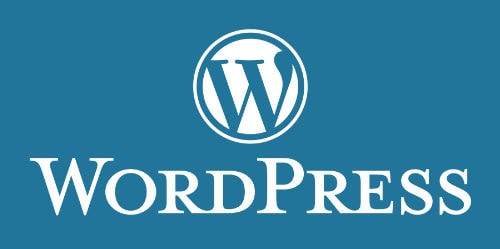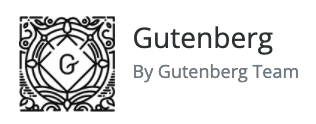WordPress will celebrate its 20th birthday next year! Over those years, WordPress has changed and evolved.
As we start 2022, choosing a theme and a page builder is a little more confusing than it was in the past – so let’s clear up some of that confusion so you can decide on the basics of your website and move forward building it!
As of writing this, there are over 9,000 free themes in the WordPress repository and a dozen or more reputable page builders. So choosing a starting point can be intimidating, but I have a method to shrink this list and select your theme and page builder so you can move forward and create your website!
First, what is a WordPress?

Let’s compare your website to building a house. For a house, a concrete foundation forms the base and everything else is built on top of it. In the case of a WordPress website, the base is … WordPress. WordPress is a content management system (CMS) that organizes, connects, and makes your website pages visible. In simple terms, it is the infrastructure that connects everything together into a viewable format. Using a CMS allows you to create a website without starting from scratch and needing to learn HTML, CSS, and other programming languages.
Next, what is a WordPress Theme?

The next step to building a house is to put up the two-by-fours for the house’s framing, which creates the basic structure. The frame gives the house shape by defining the rooms of the house and the location of windows and doors.
In the early days of WordPress, one of the first steps to build a website was to choose a WordPress theme. The theme would set the website’s fonts and colors and provide layout options for the header, footer, and pages. If you wanted to change the fonts, colors, or other properties on one page, you would need to write custom HTML or CSS code that would override the settings in the theme.
And … what is a WordPress Page Builder?
Between 2013-2016, WordPress developers started creating page builders.
A page builder is a WordPress plugin that allows you to easily change the layout of a website page using a block system. Blocks are elements of your page. Common blocks that you will find in page builders are images, headers, text blocks, buttons, and columns.
Today most of the page builders are visual, drag and drop modules that let you easily and quickly build the layout of your website pages.
The three earliest-released page builders that are still very popular today are:
- Elementor (2016)
- Beaver Builder (2014)
- Divi (2013)
More page builders have been introduced in the past few years, the most notable being WordPress’ 2020 release of Gutenberg, which is built into the WordPress platform and replaced the Classic Editor.
Starting in 2018, these page builders introduced capabilities to control the design of parts of the website that previously were set by the WordPress Theme – including setting colors, fonts, and the layouts of the heater and footer.
The ability to control design elements inside page builders that used to be set in the WordPress theme made it less critical what WordPress Theme you chose for your website.
In early 2022, to compete with page builders, WordPress launched Full Site Editing, which allows Gutenberg users to have more control over the design of each block instead of the design being dependent on the settings in the WordPress Theme.
What do you do first?
With all these changes to WordPress, I recommend you start a website by :
- Install WordPress
- Choosing a page builder
- Choosing a theme
Why do I recommend this order?
Most of your website design elements will be set inside the page builder you choose, so you will want one that you are comfortable using and fits your needs. Also, not all themes are compatible with all page builders, so it is a waste of time to look through the thousands of WordPress themes when you can narrow the list of options down once you choose a page builder.
What page builder should you choose?
There is no one “right” answer to this question. Ask five WordPress website builders, and you will get five different answers. But here are my pros and cons for the most popular WordPress builders – which are also the ones that I have experience using.
#1 – Elementor

One of the most popular Builders is Elementor, and is the website builder I use on most of the websites I build.
Pros:
- Being user friendly
- Good out-of-the-box design features
- Includes full-site-editing
- Reasonable cost – $49 per year
- It has a free version in the WordPress repository that you can use to see if you like how it works, as well as use until you need a paid feature
Cons:
- Elementor, depending on how you build your pages, can slow down your website
- Elementor gives you a lot of flexibility and options, so it does have a learning curve, but so does all of the other options
- The basic Elementor license is only valid for a single website
One of the most popular Builders is Elementor, and is the website builder I use on most of the websites I build.
Themes:
For Elementor, my choice of themes to use over the years has changed.
Initially, I used a combination of the Astra WordPress Theme and Elementor for all of the websites I created.
When Elementor added full-site-editing capability, I switched to Elemtor’s Hello Theme. With the addition of full-site editing, many purposes of a Theme became redundant, and having a feature-rich theme on top of a website builder ended up slowing down the website.
The Hello theme is what I now use on all of my sites that use Elementor because it:
- It is a lightweight theme (not bogged down by a lot of code) and will not slow down the website
- Decreases redundancy – the header, footer, font, colors, and other settings that can now be set inside the builder are not options to set in the Hello theme. This reduces the confusion about where design elements are configured.
#2 – Beaver Builder

Beaver Builder is a very close second to Elementor, and it is very similar in setup and features but just a little simpler. I often use Beaver Builder for straightforward sites, especially those that will only be live for a limited time, such as websites for one-time events.
Pros:
- The user interface is very similar to Elementor but a little simpler to use
- You can use a license on unlimited websites
- It has a free version in the WordPress repository that you can use to see if you like how it works, as well as use until you need a paid feature
Cons:
- Fewer features, which is why it is a little simpler to use
- More expensive – the basic license is $99 for the first year and $59 renewal price
- An upgraded license is needed to configure the theme elements inside the page builder. This upgraded license also includes the Beaver Builder Theme is $199 the first year and $119 for the following years
Theme:
Since I like to design my headers and footers using a page builder, I only use the Pro version of Beaver Builder, which comes with the Beaver Builder Theme.
Using the Beaver Builder Theme with Beaver Builder is my preferred combination, as it reduces conflicts between the builder and the theme since they are developed by the same company.
#3 – Divi

Divi was one of the original WordPress page builders. It was the first builder that I used, and I loved it … until they came out to their front-end editor, which I found extremely frustrating. So, although I have a lifetime license, I stopped using Divi many years ago and moved to Elementor and Beaver Builder.
Pros:
- The license includes both the Divi page builder and the Divi theme
- Has a lifetime payment option (but see the related con)
Cons:
- I find the visual builder very difficult to use and extremely easy to mess up the padding and margins of different blocks
- It does not have a free version you can test out, although you can buy it and try it out, and if it isn’t what you want to use, they have a 30-day money-back guarantee
- The lifetime payment option means the company relies on new users to maintain the software and develop new features
Theme:
I recommend using the Divi Theme if you are using the Divi page builder – it comes bundled together and they are built to work together.
#4 – Gutenberg

The last WordPress page builder on my list is a much newer page builder … WordPress’ own Gutenberg. Gutenberg was released at the end of 2018 and is included with any new WordPress installation. Gutenberg replaced the original classic editor with a block editor – which allows you to drag and drop different modules, such as headers, text, and image blocks, into the page – similar to the other page builders. Unlike some other page builders, there is not a specific theme that pairs with Gutenberg – but all of the WordPress default themes, starting from 2019, are compatible with Gutenberg. Now that it has been out for a few years, many themes are compatible with Gutenberg.
I currently use Gutenberg along with another page builder. I use the other page builder to layout all of the website pages and template and I use Gutenberg to write and layout all of my blog posts.
Using Gutenberg for blog posts is considered “best practice” and “future proofs” your website. In the future, if you decide to redesign your website pages and use a different builder or theme, it is doable because typically, you have a limited number of pages. On the other hand, it is a daunting task to re-build hundreds of blog post pages, so those pages you want to have written in the native WordPress editor – which is Gutenberg.
Pros:
- It is FREE!
- It is part of WordPress; there are no other plugins to install and maintain
- It is best practice to use Gutenberg to write your blog posts – this is how I currently use it
Cons:
- Gutenberg is still evolving and improving – it lacks the polished user interface that the other page builders have (aka it is a little more clunky to use)
- It currently lacks some of the fancier features included in other page builders
Theme:
When using the built-in Gutenberg page builder, there is much less concern with a theme not being compatible. But make sure the theme is well-maintained, has good reviews, and does indicate that it is compatible with Gutenberg.
Are you confused and you just want a recomendation?
- My favorite page builder is Elementor
- I use Elementor’s Hello Theme since it is bare-bones and does not duplicate the settings that can be done inside of Elementor
- I prefer this setup, because there is no confusion as to where settings such as color and fonts are defined – because the Hello Theme does have the option to set these design choices
- If you are looking for a more traditional WordPress theme, my next go-to theme is Astra – which has both a free and premium (paid) version
- I use Gutenberg to write and format all of my blog post
